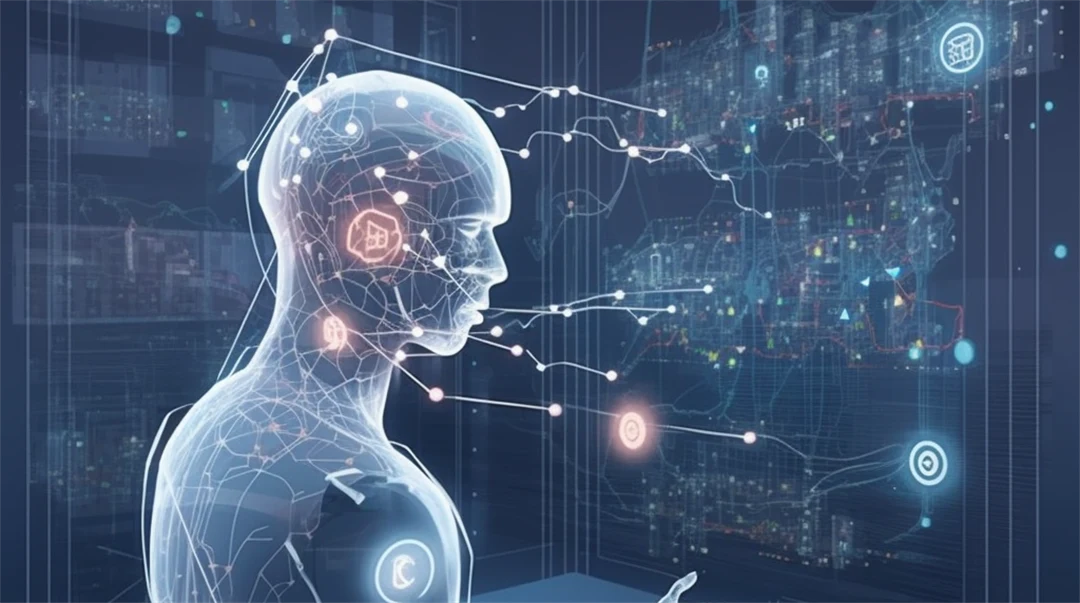Generative Artificial Intelligence and learning in higher education
The development of generative artificial intelligence has a major impact on examinations and teaching. Here you will find information and tips for teachers.
Guidelines on the use of generative AI
The group for educational development has been commissioned to produce a draft of guidelines for the use of generative AI at MidSweden University. The draft is aimed at teachers and students in undergraduate education (as a first step) and is intended to support the development of their own guidelines. The draft has been developed in collaboration with teacher representatives, the student unions, lawyers, the university library and the division of infrastructure. The draft was sent out for revision on ;ay 21, 2024 to the faculties, administration and student unions by the central director of education, to collect feedback and comments. Feedback on the proposal are awaited no later than September 12, 2024 and should be addressed to central education director Lennart Sauer. The draft, with feedback and comments, will then be adressed at the Education Council's meeting on October 1, 2024.
Available AI services
At MidSweden University, all employees and all students have access to Microsoft Copilot (formerly Bing chat) via their miun account. This can be accessed via https://copilot.microsoft.com or in the Edge browser. In both cases, you log in with the miun account to use the service. It is also allowed to create an account with your miun.se email on ChatGPT and use it. Employees who need the paid version of ChatGPT can place an order in the service portal on approval by their manager.
Lunch seminars on AI
During the academic year 23/24, the group for educational development has conducted lunch seminars with the aim of discussing and sharing experiences about generative AI and education. We now wish to collect your opinions and wishes on the lunch seminar series and possible continuation. We welcome input in our survey.
Do you have questions or want to book workshops on generative AI in higher education? Email PUkontakt@miun.se
Do you want support in relation to generative AI and teaching?
In addition to the digital support material made available here, you can contact Educational Development at PUkontakt@miun.se or www.miun.se/boka-pu
We offer free advice, workshops and training that can be tailored to your wishes.
-
AI - artificial intelligence
There are many definitions of what artificial intelligence is, but it is about technologies/machines that somehow act like a human, to some extent think like a human, perform actions that we associate with human intelligence, can identify patterns in complex data and is self-learning to some extent. Artificial intelligence comes in many forms and we encounter it in everyday life when we take pictures with our mobile phone's camera, get series recommendations on streaming services or suggested email replies.
-
Basic model
In AI, a "foundational model" is a pre-trained model that serves as a starting point for further specialization. Both generative AI and language modeling use foundational models to leverage the knowledge and insights already gained through extensive pre-training, saving time and resources when training models for specific tasks. In other words, you build on basic models to create models that are better at specific tasks.
-
Generative AI
Generative AI is a variant of artificial intelligence that is trained to create, i.e. generate, something new such as text or images based on the data that the model has been trained on. ChatGPT, Bing AI, Perplexity.ai, Dall-E, Midjourney, and similar tools are examples of generative AI.
-
Language Model - Large Language Model/LLM
A large language model (LLM) such as ChatGPT is simply an algorithm that determines how likely a sequence of words is in a given sentence and generates text based on this. A language model is generative AI and a variant of the basic model. The language models are trained on very large amounts of text (data) from different sources and then put together text based on what seems likely in response to the input/prompt given. The texts that are generated should only be seen as a text composed on the basis of probability and may contain factual errors.
-
Chatbot
A chatbot is a computer program that has been trained with AI to mimic human oral or written conversation based on probability. There are very simple chatbots that can only handle simple questions, but also very advanced ones that can handle complex conversations.
-
Algorithm
An automated sequence of instructions. As a recipe for baking approximately, with "if this happens" -- > "then this happens" steps in different complexity.
-
Machine learning and deep learning
Machine learning involves developing algorithms and models that become better at their task through training and input to be able to make their own decisions. Input into the learning process can be human.
Deep learning is machine learning through the use of neural networks - which allows for more complex learning. Deep learning can be guided by humans, to varying degrees. Common in image classification, language processing and sound recognition.
-
Data/training data
Data is simply information that is recorded somewhere and training data is the data that is used to train an AI model through machine learning. Data can be text, music, images, and so on.
-
Neural networks
Neural networks or neural networks are advanced self-learning algorithms that try to mimic the function of biological neural networks (e.g. the brain). These are an important part of deep learning in machine learning and thus also in generative AI.



